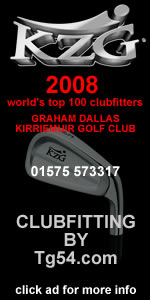The Truth about Golf Clubs - Part One
 Modern Technology or Marketing
Modern Technology or MarketingGimmick? – You decide
By GRAHAM DALLAS (Tg54.com)
So modern clubs hit the ball further, no dispute – but how?
For the past 50 years we have all been using the same basic equipment, stainless steel heads, steel shafts and rubber grips, so how come we hit modern clubs so much further?
Well, golf manufacturers know that the major factor in how far you hit your clubs is loft. It is no coincidence that your driver has the least amount of loft and your sand wedge the most.
The manufacturers also know that most of us have a desire to hit the ball further and so over the years clubs have been tweaked to accommodate this desire.
For example, in the 1960s a typical wedge would have 52 degree loft. By the 1980s it was down to 50 degrees, 48 degrees in the 1990s and, since the turn of the Century, 45 degrees is common for the loft on a wedge.
I have even seen one of the major manufacturers release a 43 degrees pitching wedge.
Taking this amount of loft from your club will add 20-30 yards to your shot.
I should point out that they also know most of us struggle to get the ball up and out of the bunker.
As a result, the loft on a sand wedge has stayed consistent at 56 degrees throughout the period being discussed.
All this has had a beautiful spin-off for the big boys, enabling them to sell more clubs.
Gap Wedges began appearing in the early 1990s and as today’s 3 and 4 irons are yesterday’s 1 and 2 irons (notoriously difficult to hit) we now have to buy utility clubs.
Buy a set of clubs like you would buy a pair of shoes. Find the ones you like the look of, and try them on (hit a demo on a course you know).
And if they don’t fit, don’t buy!!
+Any comments? E-mail them to Colin@scottishgolfview.com
Labels: Golf products









<< Home